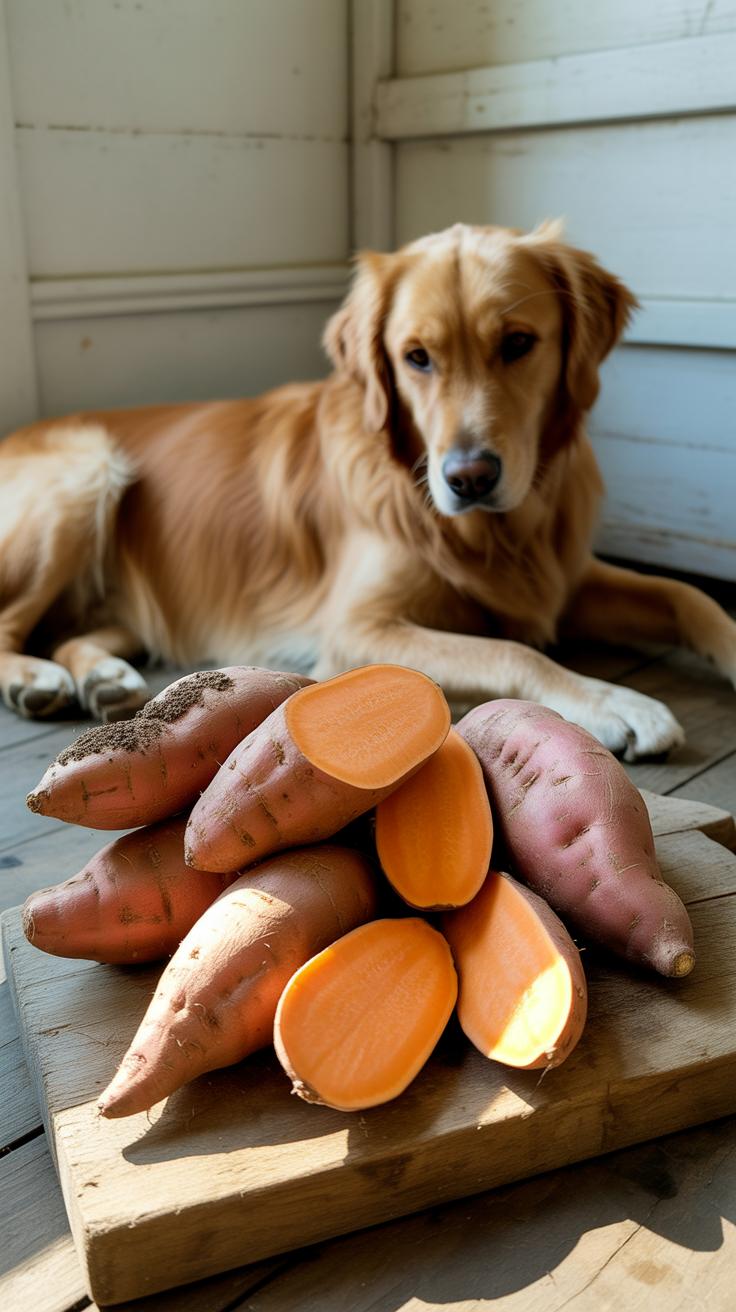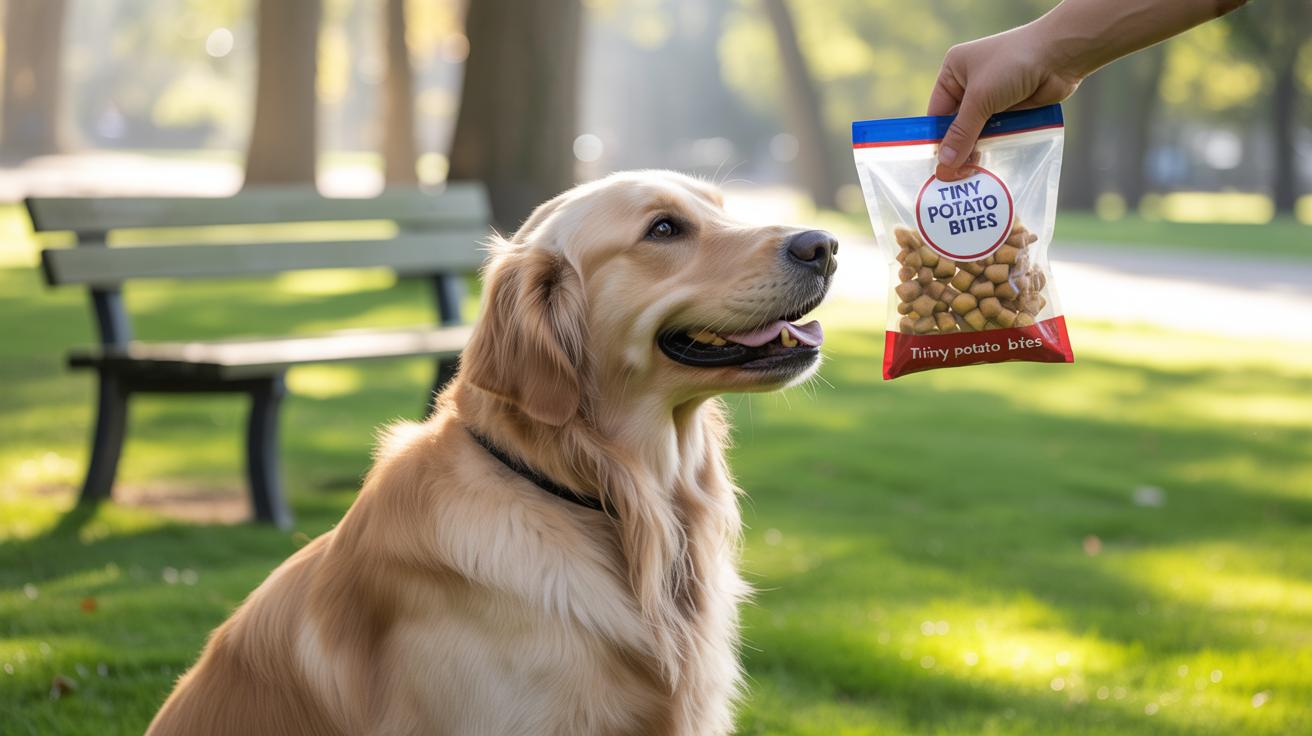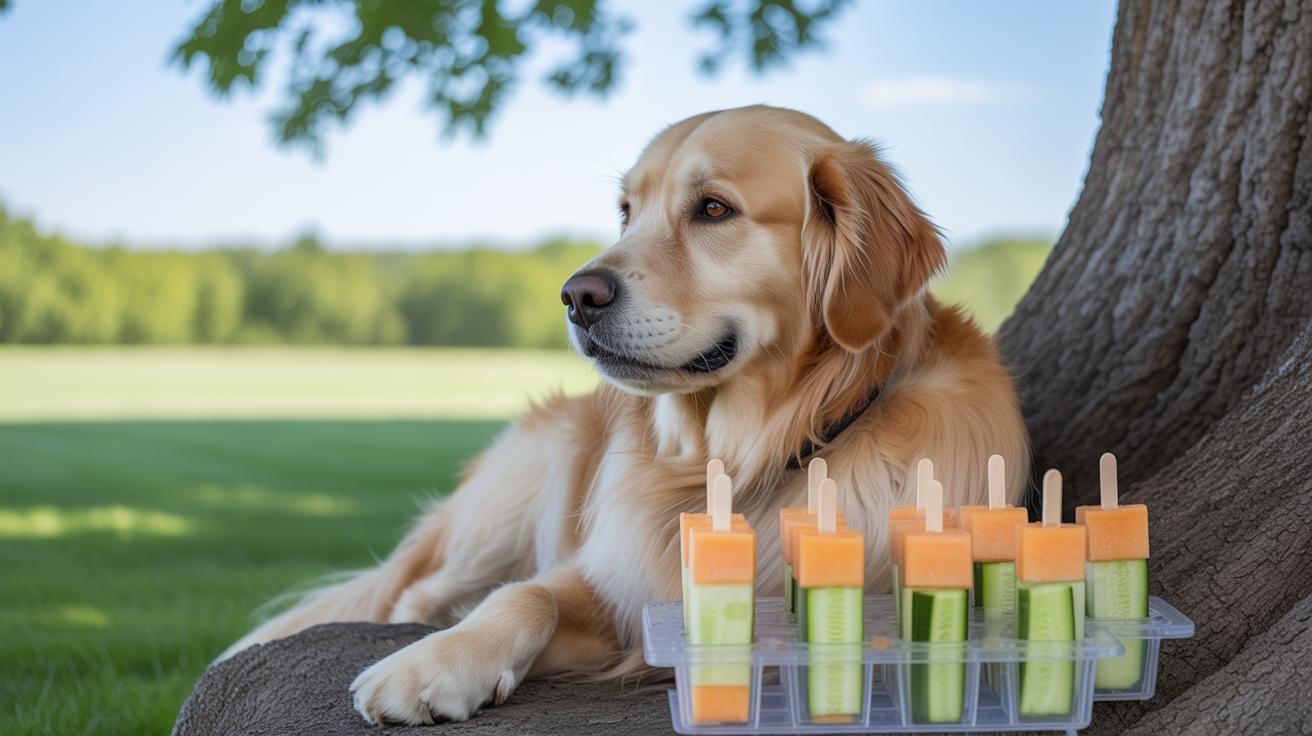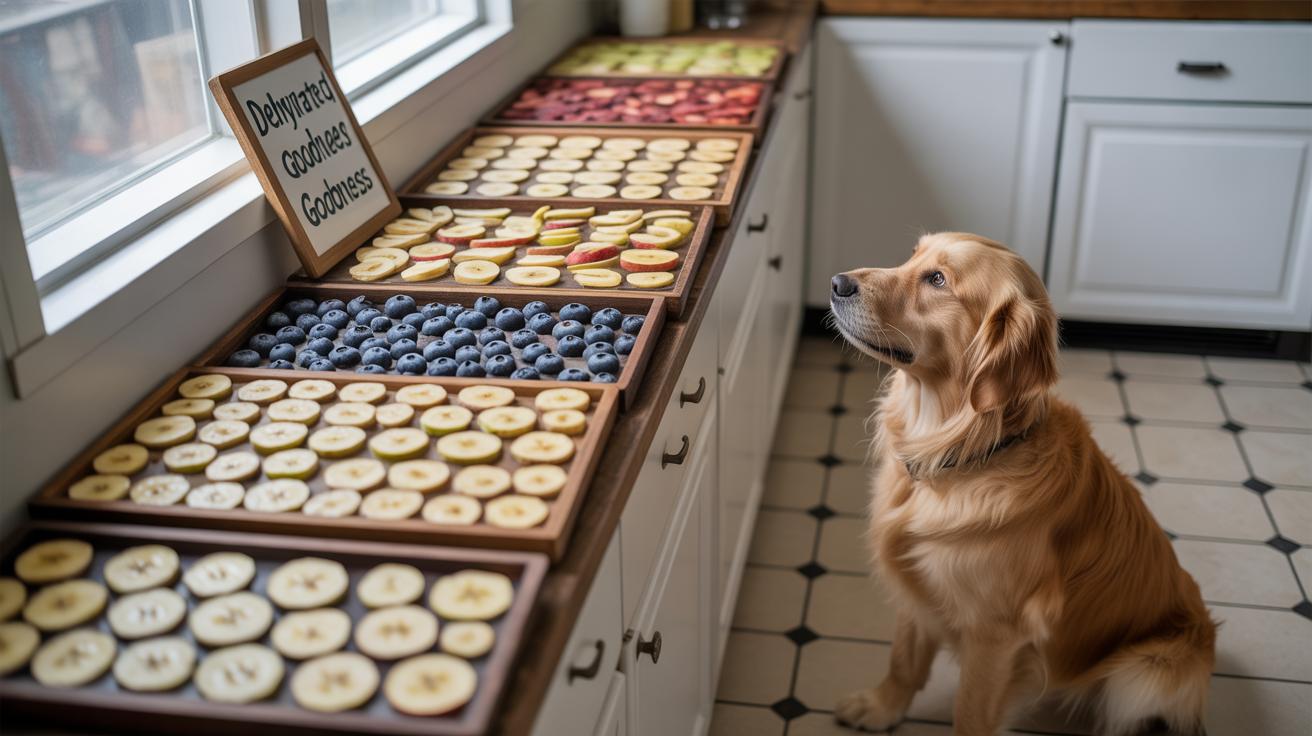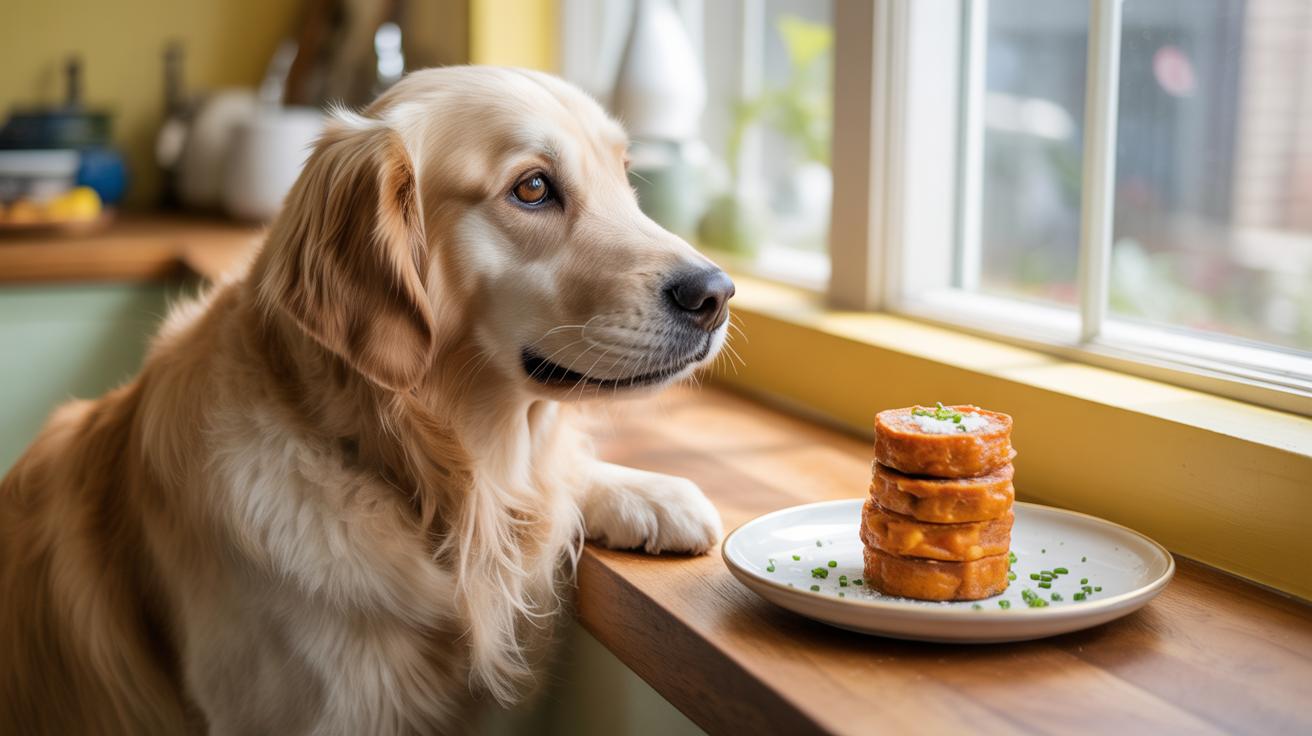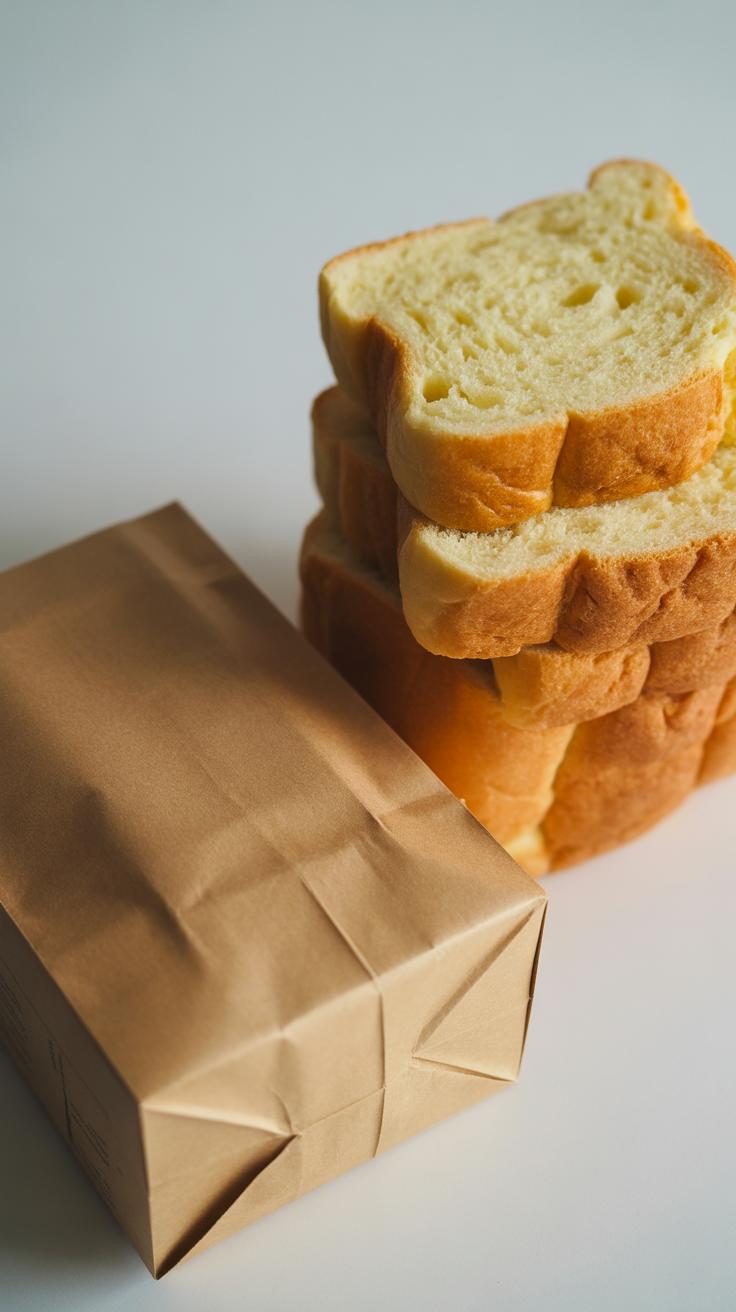Introduction
Making treats for your dog at home can be both fun and rewarding. Sweet potatoes are a healthy and tasty option that many dogs seem to enjoy. These root vegetables offer nutrition along with a natural sweetness that can easily be transformed into crunchy dog treats. In this article, we will explore why sweet potatoes are a good choice for your dog’s snacks and guide you through simple recipes to make easy crunchy bites your pup will love.
You’ll learn about the benefits of sweet potatoes for dogs, how to prepare them safely, and tips for baking or dehydrating them into treats. Whether you want to reduce store-bought treat additives or just want fresh, homemade snacks, sweet potato dog treats can be a perfect option. Let’s dive into making delicious and healthy bites that are easy to make and good for your furry friend.
Understanding Sweet Potatoes and Their Benefits For Dogs
Sweet potatoes are a starchy root vegetable, packed with natural goodness. They’re often mistaken for regular potatoes, but they belong to a different plant family and come with a distinct nutritional profile. When prepared properly, sweet potatoes serve as a wholesome treat for dogs, offering both taste and health benefits. Their natural sweetness makes them appealing to many pups, which you might’ve noticed firsthand.
Aside from being safe to eat, sweet potatoes provide a slower release of energy compared to simple carbs, which can help avoid that energy crash dogs sometimes experience after sugary snacks. Because they’re whole foods, they’re less processed and often easier on your dog’s digestive system than commercial treats filled with artificial fillers.
Still, you do want to feed them plain and cooked, as raw sweet potatoes might be hard to digest or even cause blockages. It’s a simple ingredient, but with plenty going on beneath the surface.
Nutrients in Sweet Potatoes That Help Dogs
Sweet potatoes contain a variety of nutrients that support your dog’s overall health. The standout components include:
- Fiber: It helps regulate digestion and keeps your dog’s bowel movements regular, reducing the chances of constipation.
- Vitamin A: Probably the most famous nutrient here, vitamin A supports healthy vision, immune function, and skin health.
- Vitamin C: This antioxidant helps boost immunity and aids in the repair of body tissues.
These nutrients work quietly behind the scenes. For example, fiber can also promote a feeling of fullness, which might help if you’re managing your dog’s weight. Vitamin A isn’t just about eyesight — it has a role in keeping those cells protected, and that’s crucial for dogs who are active or older. Vitamin C, well, dogs can produce it themselves, but a little extra from food might still help, especially if your pooch faces stress or illness now and then.
You might wonder if all dogs benefit equally, but that’s not quite the case.
Are Sweet Potatoes Safe For All Dogs
Sweet potatoes usually pose no problem for most dogs, but a few points deserve your attention. Some dogs have food sensitivities or allergies, and while rare, sweet potatoes can trigger reactions in sensitive pups. So, watch your dog’s reaction when trying any new treat.
Also, dogs with diabetes or weight issues might need just a bit of caution since sweet potatoes have natural sugars. Though these sugars release slowly compared to processed carbs, they still impact blood sugar. If your dog belongs to this group, it’s advisable to talk to your vet before making treats a regular thing.
One more thing—how you prepare the sweet potatoes matters. Avoid seasoning or adding anything toxic like onion or garlic. Plain, cooked sweet potatoes are the safest way to go. So, while sweet potatoes can be a solid ingredient for homemade treats, a little attention to your dog’s individual health and preferences goes a long way.
Choosing The Right Sweet Potatoes For Treats
Types Of Sweet Potatoes To Use
Sweet potatoes come in a few common varieties, and picking the right one can make a difference in your dog’s treats. There’s the classic orange-fleshed sweet potato, which is the most common and widely available. It has a natural sweetness and soft texture once cooked, making it a popular choice for crunchy bites. Then, you’ve got the white or cream-fleshed type, which tends to be less sweet but firmer. Some dogs might prefer this for the texture, especially if you’re aiming for a crunchier result.
Another variety is the purple sweet potato. It’s less common in regular grocery stores but has a slightly earthier taste. You might wonder if the color affects your dog’s treat — it won’t, really. The nutrients stay mostly the same, but some dogs may react differently to the flavor or texture. I think, when in doubt, stick with the orange or white types, as they’re easier to find and work well overall.
Fresh Versus Frozen Sweet Potatoes
Using fresh sweet potatoes is usually preferred. They tend to have a better texture and flavor for treats, which some pups might appreciate. Plus, you have more control over freshness and sources, which matters if you’re picky about what your dog eats. Fresh ones also dry out better when baked into crunchy treats, avoiding sogginess.
Frozen sweet potatoes can be a convenient alternative. They’re often pre-cut and sometimes pre-cooked, which can save prep time. But the trade-off is that they might have more moisture, making your treats less crisp or requiring longer baking. Canned sweet potatoes, while tempting for ease, often contain added sugars or preservatives, which you probably want to avoid for your dog’s health.
So the question, really, is: would you rather spend more time prepping for a top-quality treat, or is convenience more important? I tend to go with fresh because my dogs seem to enjoy the crunchy texture better that way—but your mileage may vary.
Preparing Sweet Potatoes Before Making Treats
Washing and Peeling The Sweet Potatoes
Before you even think about turning sweet potatoes into crunchy treats, a thorough wash is essential. Sweet potatoes grow underground, so they often carry dirt and tiny residues that you definitely don’t want in the treats. Rinsing under cold running water while scrubbing gently with a brush does the trick well. You might wonder if peeling is necessary—sometimes it depends. The skin contains nutrients and fiber, but it can also be tougher and might affect the texture of your treats. If your dog is sensitive or you prefer a smoother crunch, peeling can help. Use a vegetable peeler or a small knife to remove the skin, but sometimes a good scrub is enough, especially if you slice thinly.
Cutting And Slicing For The Best Texture
How you cut the sweet potatoes changes everything. For crunchy bites, thinner slices usually work better—they dry and bake more evenly, getting that satisfying snap your dog will enjoy. Try cutting into quarters or halves lengthwise for thicker, stick-like treats, or thin rounds if you want more bite-sized snacks. Uneven cuts can cause some pieces to burn and others to stay soft, and that’s a bit annoying. I’ve had batches where I underestimated slice thickness, and the end result was a mix of crunchy and chewy, which isn’t always a bad thing but might not be what you expect. So, aim for uniformity but accept some imperfection—it adds character, maybe.
Simple Baked Sweet Potato Treat Recipes
Basic Baked Sweet Potato Slices
Sometimes, the simplest recipes work best for our dogs. Baking plain sweet potato slices transforms them into crunchy bites that many pups find irresistible. To try this, start by slicing a cleaned sweet potato into thin, even pieces—around a quarter-inch thick is good, though you can experiment with thickness. Lay the slices on a baking sheet lined with parchment paper to prevent sticking.
Pop them into an oven preheated to about 250°F (120°C) and bake for roughly two to three hours. The key here is low and slow baking; it dries the slices rather than crisping too quickly, giving that satisfying crunch. You might want to flip them midway through to ensure even texture on both sides. The smell while baking can fill your kitchen in a subtle, sweet way—it can be tempting to snack on them yourself.
These treats contain no extras, just pure sweet potato goodness. They’re perfect if you prefer minimal ingredients or your dog is sensitive to additives. You may wonder if leaves or edges burn easily, but with low heat and patience, you mostly avoid that risk. Give them a try and see if your dog prefers these simple slices over more complex treats.
Sweet Potato And Oat Treats
Adding oats to the mix gives your treats a bit more texture and some nutritional variety. Oats bring a mild flavor and can help bind the treats if you prefer something less brittle than plain slices. For this recipe, start with about a cup of cooked, mashed sweet potato and a half cup of rolled oats.
Combine them in a bowl, mixing well until you get a somewhat sticky dough. Feel free to add a dash of cinnamon if you think your dog might like it—though keep it minimal. Scoop small portions onto a lined baking sheet, flatten them out to about a quarter-inch thick, and bake at 350°F (175°C) for 20 to 30 minutes. The oat addition makes the treats a bit softer with a slight chew, which some pups might prefer.
If you have leftover mashed sweet potato, this recipe helps prevent waste while making a nutritious snack. These treats aren’t just tasty; they pack fiber from oats and beta-carotene from the sweet potatoes. You could also switch up oats for oat flour if you want a finer texture. Baking time varies, so keep an eye on them—sometimes they crisp faster than expected. Your dog might enjoy the new texture change from plain slices, or might turn their nose up initially—dogs can be picky like that.
Making Dehydrated Sweet Potato Crunchy Treats
Dehydrating sweet potato slices is a great way to create chewy, crunchy dog treats that last longer than baked ones. The process removes moisture slowly, so the flavors concentrate, and the texture changes just enough to keep your pup interested. If you’re wondering how to get that perfect texture without overdoing it, here’s what I found works well.
Using A Food Dehydrator
With a dehydrator, you get consistent airflow and steady low heat, which makes drying sweet potato slices quite straightforward. Start by slicing your sweet potato thinly—about a quarter inch thick. Thicker slices take much longer and might end up soft in the middle.
- Place the slices evenly on the trays, making sure they don’t overlap.
- Set the dehydrator to around 135°F (57°C). This temperature keeps nutrients more intact and avoids burning.
- Check them after about 6 hours, but drying time can vary between 6 to 12 hours depending on thickness and water content.
- The treats are done when they snap easily but still have a faint chewiness—too dry and they get brittle, too moist and they may spoil faster.
I usually start checking at the six-hour mark, and then every hour after, because sometimes just a few slices take longer. Patience tends to be key here.
Oven Dehydration Method
If you don’t have a dehydrator, your oven can do a decent job, too. The trick is keeping the temperature low, low enough that it gently pulls moisture out without cooking the sweet potato.
- Preheat your oven to 170°F (or the lowest setting it has). You might need to prop the door open slightly to let moisture escape.
- Arrange thin sweet potato slices on a baking sheet lined with parchment paper.
- Rotate the trays every hour or so for even drying.
- The process usually takes 4 to 6 hours, but watch carefully the last hour to avoid crisping the edges too much.
Oven drying can be a bit tricky—you have to balance between drying and accidentally baking. But I’ve found that it works well if you check frequently, especially since ovens vary in how low they’ll go. If you want a treat that’s crunchy on the outside and slightly chewy inside, this method can surprise you.
Storing And Serving Sweet Potato Treats
Best Storage Practices
Once you’ve made those crunchy sweet potato treats, keeping them fresh is key. The best way? Airtight containers. I often find glass jars with tight lids work well, but a good plastic container with a snap-lock seal can do just fine, too.
Try to keep your treats somewhere cool and dry. Moisture is the enemy here—it softens the crunch quickly. I’ve noticed that if kept out too long in a humid place, the treats lose their texture faster than expected. It’s a bit like keeping crackers fresh.
How long can you expect them to last? Usually, sweet potato treats hold up well for about two weeks when stored right. Beyond that, they might start to get a bit stale, or worse, develop a strange smell. If you want to keep them longer, freezing can work, but thaw fully before serving to avoid sogginess.
Serving Size And Treat Frequency
Deciding how much to give your dog is kind of personal. Typically, one or two small pieces per day should be plenty, depending on your dog’s size and diet. I’ve seen some pups practically go nuts for these treats, but feeding too many might upset their tummy or add unnecessary calories.
Think of sweet potato treats as a supplement to meals, not a meal replacement. If your dog has any health issues, perhaps scale back a bit. Also, watching your dog’s reaction after introducing these treats can help you decide frequency. Sometimes less is more, really.
Have you noticed how some dogs seem satisfied with just a few bites, while others go for more? It’s worth experimenting a bit to find the right balance for your furry friend.
Potential Allergies And Health Considerations For Dogs
Sweet potatoes are generally safe for most dogs, but some pups might show sensitivities or allergies. While reactions to sweet potatoes are not extremely common, they can happen. Each dog’s digestive system reacts differently, so it’s a bit of trial and error when introducing these treats. You might notice some dogs digest them fine, while others could struggle a bit.
Signs Of Allergic Reactions
If your dog is uneasy after eating sweet potato treats, watch out for these signs:
- Itching or scratching more than usual
- Red, inflamed skin or rashes
- Swelling around the face, ears, or paws
- Vomiting or diarrhea
- Excessive licking or chewing their paws
Some dogs might just have mild discomfort, but it’s worth paying attention. Sometimes, the signs aren’t immediate and might show up after a few days. Keep in mind that some symptoms can be confused with other allergies, making it tricky to pinpoint sweet potatoes as the cause.
Moderation And Veterinary Advice
Even if your dog enjoys sweet potato treats, moderation is key. Too many treats, even healthy ones, can cause digestive upset or weight gain. It’s tempting to give treats often, especially when your pup looks so pleased, but balance matters.
Before adding sweet potatoes or any new treat to your dog’s diet, check in with your vet. They know your dog’s history best and can help you decide if sweet potatoes are a good choice. Sometimes what seems like a harmless snack might not be ideal for dogs with specific health issues like diabetes or pancreatitis.
Ultimately, starting slow and watching closely is the safest path—your dog’s well-being comes first, even if the treats seem innocent enough.
Why Homemade Treats Beat StoreBought Options
Making your own dog treats at home gives you a kind of control you simply don’t get from store-bought options. When you buy from a pet store, you’re often faced with long ingredient lists full of preservatives, artificial flavors, and fillers that don’t add much nutritional value. At home, you decide exactly what goes into your pup’s snacks—no mystery ingredients, no chemicals crammed in to extend shelf life.
Plus, homemade treats can actually save you money, especially if you bake in batches. Think about it—sweet potatoes and a few simple ingredients cost less than premium store treats. Over time, the savings add up, which is good news if you spoil your dog often.
Then there’s the customization factor. Every dog is different, with unique tastes and sometimes specific dietary needs. Maybe yours prefers softer bites or has a mild sensitivity to certain foods. You can tweak your recipes to fit those needs perfectly, which is tough to do with pre-made treats on shelves.
So, wouldn’t it be nice to give your dog a snack you made yourself, knowing what’s inside, and that it’s designed just for them? Sometimes it feels like a small step, but it really can make a difference in their health and happiness.
Conclusions
Sweet potato treats offer a simple, nutritious, and tasty option for your dog’s snacking needs. Knowing the benefits of sweet potatoes helps you understand why these treats can support your dog’s health. They are rich in fiber, vitamins, and antioxidants which contribute to your dog’s overall well-being.
Making your own sweet potato dog treats at home is easy and customizable, letting you control ingredients and avoid unwanted additives. Crunchy treats made from sweet potatoes can become a favorite for your pup. With simple preparation methods and recipes, these healthy snacks can strengthen the bond with your dog and keep them happy and healthy.


